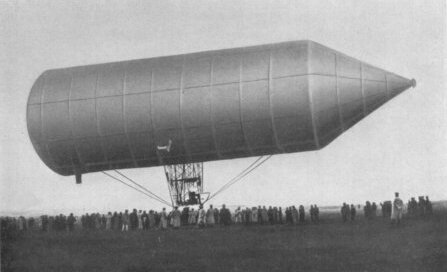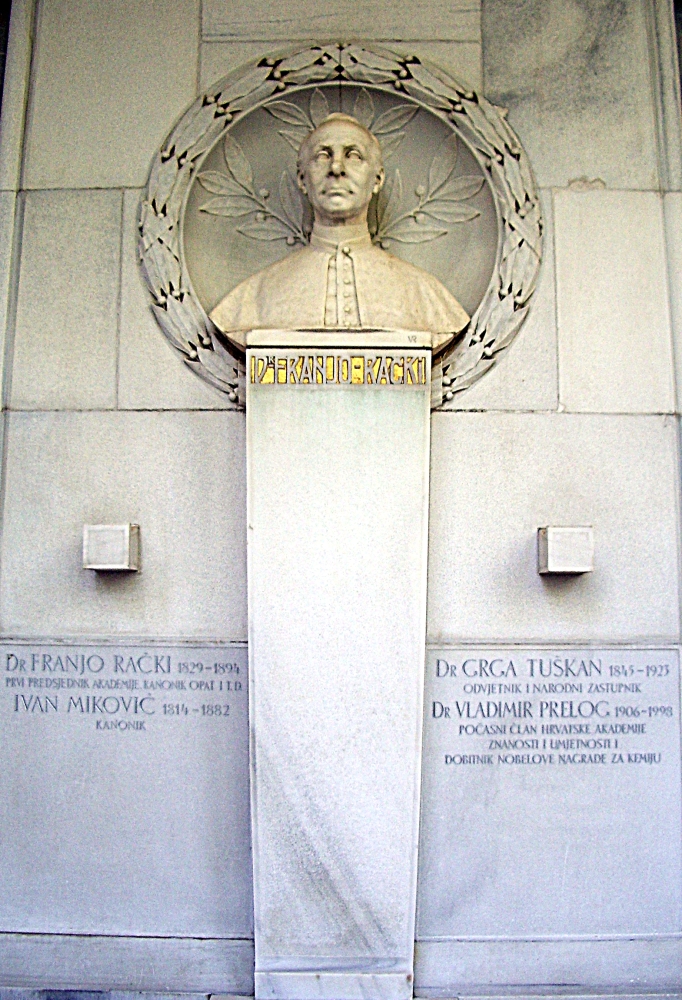|
List Of Croatian Inventors
This is a list of Croatian inventors. {{Compact ToC, seealso=yes, nobreak=yes, side=yes B * Zlata Bartl * Josip Belušić * Ruđer Bošković D * Ivan Đikić * Igor Dvornik F * Vilim Srećko Feller G * Marin Getaldić H * Franjo Hanaman J * Aleksandar Just K * Franjo Kajfež * Marcel pl. Kiepach * Ivo Kolin * Benedikt Kotruljević * Ferdinand Kovačević L * Antun Lučić * Ivan Lupis-Vukić M * Ante Maglica * Peter Miscovich * Andrija Mohorovičić P * Slavoljub Penkala * Herman Potočnik * Vladimir Prelog * Mario Puratić R * Mate Rimac * Lavoslav Ružička S * David Schwarz * Pavao Skalić * Marin Soljačić U * Tomislav Uzelac V * Faust Vrančić * Ivan Vučetić External links Hrvati koji su mijenjali svijet ima ih više nego slutite, Politika plus Inventors * Croatian Inventors An invention is a unique or novel device, method, composition, idea or process. An invention may be an improvement upon a machine, product, or process for inc ... [...More Info...] [...Related Items...] OR: [Wikipedia] [Google] [Baidu] |
Zlata Bartl
Zlata Bartl ( Dolac, 20 February 1920 – Koprivnica, 30 July 2008) was a Bosnian Croat scientist and is the creator of Vegeta. Bartl finished school in Sarajevo and went to Zagreb to study natural sciences, engineering, medicine and health, biotechnical sciences, social sciences, and humanities. In 1955, she began working as a chemical technician in Podravka, Croatia. It was there in 1959 that she created Vegeta, which would become one of the most popular Croatian brands. She has since then received numerous recognitions and awards, including the Order of Danica Hrvatska The Order of Danica Hrvatska ( hr, Red Danice hrvatske; lit. "Order of the Croatian Morning Star") is the fourteenth most important medal given by the Republic of Croatia. The order was founded on 1 April 1995. The medal is awarded for different pu .... There is a scholarship foundation set up in her name for graduate students studying science in Zagreb. References External links Prof Zlata Bartl Foundation ... [...More Info...] [...Related Items...] OR: [Wikipedia] [Google] [Baidu] |
Peter Miscovich
Peter Miscovich (Petar Mišković/Pero Mišković) (1885-1950) was a Croatian-born American inventor. He was born in the village of Imotica in the Austro-Hungarian Kingdom of Dalmatia in 1885 and died in Alaska in 1950. His most well-known inventions were a steam-powered washing machine and improvement of steam bath. He had seven children with his wife Stane. His son John Miscovich John A. Miscovich (1918–2014) was an American inventor and gold miner. He and his family owned about 1400 acres of mining claims around Flat, Alaska and were active placer gold miners there. Miscovich was known as the "mayor of Flat". He was ... invented the Intelligiant pump used on boats, fire vehicles and more. Peter was also involved with creating Hydraulics, hydraulics machines. Biography Miscovich went to America in 1903, leaving from Le Havre, France and arriving in New York City at age eighteen on 25 May. He and his relatives had no formal education, but he was apprenticed in Montana ... [...More Info...] [...Related Items...] OR: [Wikipedia] [Google] [Baidu] |
Ivan Vučetić
Juan Vucetich Kovacevich (born Ivan Vučetić; 20 July 1858 – 25 January 1925) was a Croatian-Argentine anthropologist and police official who pioneered the use of dactyloscopy (fingerprint identification). Biography Vucetich was born in Hvar, Dalmatia, then part of the Austrian Empire, and immigrated to Argentina in 1882. In 1891, he began the first filing of fingerprints based on ideas of Francis Galton which he expanded significantly. He became the director of the Center for Dactyloscopy in Buenos Aires. At the time, he included the Bertillon system alongside the fingerprint files. The first positive identification of a criminal was made in 1892, when Francisca Rojas killed her two children and cut her throat, putting the blame on an outside attacker. A bloody print identified her as the killer. Argentine police adopted Vucetich's method of fingerprinting classification and it spread to police forces all over the world. Vucetich improved his method with new material ... [...More Info...] [...Related Items...] OR: [Wikipedia] [Google] [Baidu] |
Faust Vrančić
Fausto Veranzio ( la, Faustus Verantius; hr, Faust Vrančić; Hungarian and Vernacular Latin: ''Verancsics Faustus'';Andrew L. SimonMade in Hungary: Hungarian contributions to universal culture/ref>The Hungarian Quarterly, Vol. XLII * No. 162 *, Summer 2001 László Sipka: Innovators and Innovations 1551 – 20 January 1617) was a and from , then part of the |
Tomislav Uzelac
Tomislav Uzelac is the Croatian programmer who wrote an amp MPEG audio decoder that is considered to be the first successful software MP3 player. Two students from the University of Utah, Justin Frankel and Dmitry Boldyrev adapted the decoder (which was originally written for Unix-like systems) to work on Windows and made it the MP3 decoding engine for the original version of Winamp (it was later replaced with Nullsoft's own Nitrane decoder, which was then replaced with a Fraunhofer ISO decoder). Uzelac studied at the University of Zagreb's Faculty of Electrical Engineering and Computing (FER) under professor Mario Kovač, working on MP3 software decoding. In 1997 he created AMP, and also graduated with an engineer's degree An engineer's degree is an advanced academic degree in engineering which is conferred in Europe, some countries of Latin America, North Africa and a few institutions in the United States. The degree may require a thesis but always requires a non-a ... from ... [...More Info...] [...Related Items...] OR: [Wikipedia] [Google] [Baidu] |
Marin Soljačić
Marin Soljačić (born February 7, 1974) is a Croatian-American physicist and electrical engineer known for wireless non-radiative energy transfer. Biography Marin Soljačić was born in Zagreb in 1974. After graduating from XV Gymnasium (MIOC) in Zagreb he attended MIT, where he got his BSc in physics and electrical engineering in 1996. In 1998 he got his MSc from Princeton University and in 2000 he got his PhD in Physics. In 2005 he became a professor of Physics at MIT. In 2008, he was awarded a MacArthur Fellowship. Work In 2007 Marin Soljačić and his assistants successfully made the first efficient non-radiative power transfer at a distance of 2 meters turning on a 60 W light bulb. Energy transfer was 40% efficient. Professor Soljačić's experiments and work in wireless energy transfer are related in spirit to the work of Nikola Tesla in the early 20th century, but also have significant differences: unlike Tesla's long-range wireless energy transfer in Colorado, the Solj ... [...More Info...] [...Related Items...] OR: [Wikipedia] [Google] [Baidu] |
Pavao Skalić
Pavao may refer to: * Pavao (given name) Pavao is a Croatian masculine given name, cognate to Paul. It may refer to: * Pavao Anđelić (1920–1985), Bosnian archaeologist and historian * Pavao Dragičević (1694–1773), Bosnian Franciscan friar and bishop * Pavao Ljubičić (1918– ..., a Croatian name * Pavão (other), a Portuguese name {{disambig ... [...More Info...] [...Related Items...] OR: [Wikipedia] [Google] [Baidu] |
David Schwarz (aviation Inventor)
David Schwarz ( hu, Schwarz Dávid; hr, David Švarc, ;''David'' in isolation: . 20 December 1850 – 13 January 1897)Ernst Heinrich Hirschel, Horst Prem, Gero Madelung, ''Aeronautical Research in Germany: From Lilienthal until Today'', "The Controllable Airship - The Dirigible", pp. 24-25. Springer-Verlag Berlin Heidelberg, 2004, (eBook ) was a Hungarian aviation pioneer. He is known for creating an airship with a rigid envelope made entirely of metal. Schwarz died only months before the airship was flown. Some sources have claimed that Count Ferdinand Graf von Zeppelin purchased Schwarz's airship patent from his widow, a claim which has been disputed. He was the father of the opera and operetta soprano Vera Schwarz (1888–1964). Birth date and nationality Sources for his date of birth vary. The OCLC cites Rotem, Ẓ. giving it as 7 December 1850, while Brockhaus gives it as 20 December 1850 The OCLC, as well as Brockhaus, show Schwarz's place of birth as Zalaegerszeg, Hunga ... [...More Info...] [...Related Items...] OR: [Wikipedia] [Google] [Baidu] |
Leopold Ružička
Leopold Ružička (; born Lavoslav Stjepan Ružička; 13 September 1887 – 26 September 1976) was a Croatian-Swiss scientist and joint winner of the 1939 Nobel Prize in Chemistry "for his work on polymethylenes and higher terpenes" "including the first chemical synthesis of male sex hormones." He worked most of his life in Switzerland, and received eight doctor ''honoris causa'' in science, medicine, and law; seven prizes and medals; and twenty-four honorary memberships in chemical, biochemical, and other scientific societies. Early life Ružička was born in Vukovar, Kingdom of Croatia-Slavonia, Lands of the Crown of Saint Stephen, Austro-Hungarian Empire (today in Croatia). His family of craftsmen and farmers was mostly of Croat origin, with a Czech great grandparent, Ružička, and a great grandmother and a great grandfather from Austria.Now available from He lost his father, Stjepan, at the age of four, and his mother, Amalija Sever, took him and his younger brother Stje ... [...More Info...] [...Related Items...] OR: [Wikipedia] [Google] [Baidu] |
Mate Rimac
Mate Rimac (; born 12 February 1988) is a Croatian innovator, entrepreneur, and founder of the Croatian electric sports car company Rimac Automobili and Greyp Bikes, a high-tech eBike and eBike technology company. During his high-school years, Rimac won local, national and international competitions for electronics and innovation. At 19 years old, Rimac started to convert an old 1984 BMW 3 Series into an electric car in his garage. The vehicle broke several world records for electric cars. He then went on to create his first all-electric supercar from the ground up, the Concept One, in 2011 at the age of 23. His company, Rimac Automobili, went from its first employees in 2011 to more than 900 employees in 2020, attracting major investment from Porsche AG, Hyundai-Kia and Camel Group, one of Asia's largest battery manufacturers. In addition to developing and manufacturing their own electric sports cars, Rimac provides electric vehicle technologies and systems for many big na ... [...More Info...] [...Related Items...] OR: [Wikipedia] [Google] [Baidu] |
Mario Puratić
Mario Puratić (1904 - 1993) (usually spelled Puretic, and sometimes Puretich, in English) was an Austro-Hungarian Empire-born American inventor who made major advances in fishing technology, such as the Puretic power block. Puratić was born in 1904 in the town of Sumartin on the island of Brač in a Croats, Croatian family of farmers and fishermen. In 1938 he emigrated to the United States, worked at steel works and later in the harbour of Brooklyn. Looking for the open sea after World War II he moved to California, to San Pedro, Los Angeles, San Pedro, where many people from Brač had moved to. He hired there on tuna fisher boats and trawlers. A good catch of fish, meant that many men were necessary to pull the net on board. Within a few months, during 1953 in San Pedro, Los Angeles, San Pedro he invented the Puretic power block. A job which once needed 8 to 10 people could now equally quickly be done with only 5 or 6 people, but still no one was interested in the product. In 1 ... [...More Info...] [...Related Items...] OR: [Wikipedia] [Google] [Baidu] |
Vladimir Prelog
Vladimir Prelog (23 July 1906 – 7 January 1998) was a Croatian-Swiss organic chemist who received the 1975 Nobel Prize in chemistry for his research into the stereochemistry of organic molecules and reactions. Prelog was born and grew up in Sarajevo.Vladimir Prelog (1975Autobiography the Nobel Committee. He lived and worked in Prague, Zagreb and Zürich during his lifetime. Early life Prelog was born in Sarajevo, Condominium of Bosnia and Herzegovina, at that time within Austria-Hungary, to Croat parents who were working there. His father, Milan, a native of Zagreb, was a history professor at a gymnasium in Sarajevo and later at the University of Zagreb. As an 8-year-old boy, he stood near the place where the assassination of Franz Ferdinand occurred. Education Prelog attended elementary school in Sarajevo, but in 1915, as a child, Prelog moved to Zagreb (then part of the Austro-Hungary) with his parents. In Zagreb he graduated from elementary school. At first, he attended ... [...More Info...] [...Related Items...] OR: [Wikipedia] [Google] [Baidu] |




